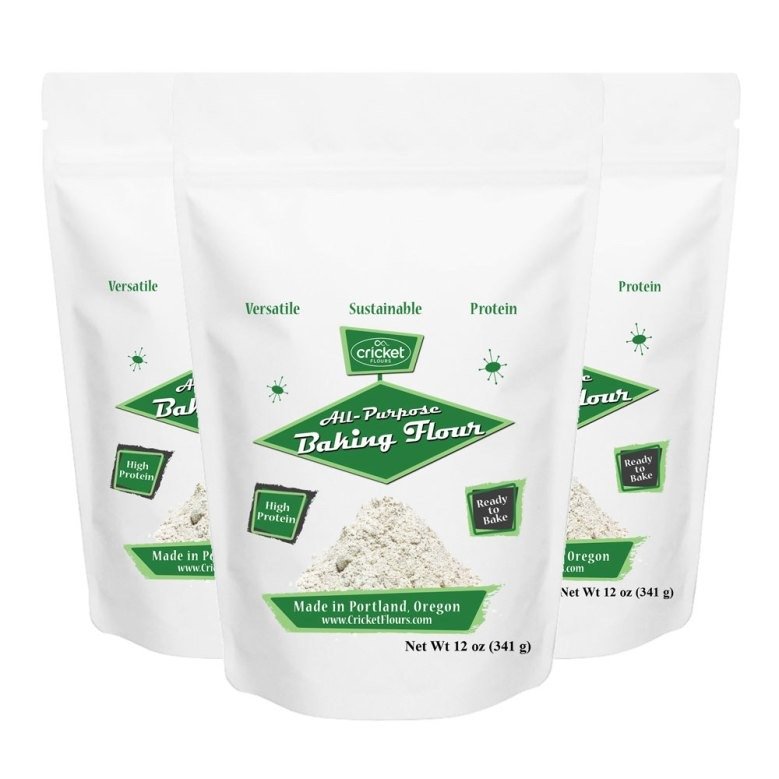
Describe how a multistage fitness test works and what it is intended to do?
Introduction
Describe how a multistage fitness test works and what it is intended to do? Fitness assessments are crucial for evaluating physical performance, setting goals, and tracking progress. One of the most comprehensive and widely recognized methods is the multistage fitness test. Often referred to as the beep test or shuttle run test, it’s a popular tool used in various settings, from sports teams to schools and fitness centers. This article will delve into what a multistage fitness test is, how it works, and its intended purposes. We’ll also explore the benefits and limitations of the test, providing a comprehensive guide for anyone interested in incorporating it into their fitness regimen.
What is a Multistage Fitness Test?
A multistage fitness test is a standardized assessment designed to measure cardiovascular endurance and aerobic capacity. It involves a series of progressively challenging stages, typically set to a timed beep or tone, that require participants to run back and forth across a set distance. The test continues until the participant can no longer keep up with the beeps or fails to meet the required pace.
The Purpose of the Multistage Fitness Test
The primary purpose of the multistage fitness test is to evaluate an individual’s aerobic endurance. It provides a clear indication of how well the cardiovascular system can supply oxygen to the muscles during sustained physical activity. This information is valuable for:
Assessing Fitness Levels: The test helps determine an individual’s current fitness level, which can be used to tailor exercise programs and set realistic fitness goals.
Monitoring Progress: By repeating the test periodically, individuals and trainers can track improvements in aerobic capacity and overall fitness.
Evaluating Athletic Performance: For athletes, especially those in sports requiring high levels of endurance, the test helps gauge readiness for competition and identify areas needing improvement.
Setting Baselines for Training: Establishing a baseline allows for the creation of personalized training plans that target specific fitness areas.
How Does the Multistage Fitness Test Work?
Test Setup and Equipment
Track and Markers: The test is usually conducted on a flat, non-slip surface, such as a gymnasium floor or an outdoor track. Markers are placed at each end of a 20-meter distance.
Audio System: A tape or digital recording provides the beeps or tones at regular intervals. The frequency of the beeps gradually increases, indicating the need to run faster.
Participants: Individuals take their positions at one end of the track, ready to run to the opposite end in response to the beeps.
The Test Procedure
Warm-Up: Participants should perform a thorough warm-up to prepare their muscles and cardiovascular system for the test. This helps prevent injuries and ensures optimal performance.
Starting the Test: At the signal, participants begin running from one end of the track to the other, reaching the markers before each beep. The beeps are initially spaced at a slower pace.
Increasing Intensity: As the test progresses, the interval between beeps shortens, requiring participants to increase their running speed. The test typically starts at a slow pace and gradually becomes more demanding.
End of Test: The test continues until the participant can no longer keep up with the beeps. They may also be disqualified if they fail to reach the markers within the specified time. The final level completed before failure is recorded as the participant’s score.
What is the Multistage Fitness Test Intended to Do?
Evaluate Aerobic Endurance
Describe how a multistage fitness test works and what it is intended to do: The primary aim of the multistage fitness test is to assess aerobic endurance. Aerobic endurance is a key component of overall fitness, reflecting the ability of the cardiovascular system to sustain prolonged physical activity. A high score indicates excellent aerobic capacity, while a lower score suggests a need for improvement.
Predict VO2 Max
The test can also be used to estimate VO2 max, which is the maximum amount of oxygen the body can utilize during intense exercise. VO2 max is a critical indicator of cardiovascular fitness and is often used in sports and health settings to gauge aerobic performance.
Compare Fitness Levels
The multistage fitness test provides a standardized measure of endurance that can be compared across different individuals and groups. This makes it a useful tool for benchmarking fitness levels and identifying areas where improvement is needed.
Set Fitness Goals
By understanding an individual’s current fitness level, the test helps in setting appropriate and achievable fitness goals. Whether for general health improvement or athletic performance, having clear benchmarks guides effective training and motivates progress.
Benefits of the Multistage Fitness Test
Comprehensive Assessment
Unlike some fitness tests that measure only one aspect of physical performance, the multistage fitness test provides a broad assessment of cardiovascular endurance. It challenges the participant’s ability to maintain a pace over time, offering insights into their aerobic capacity.
Easy to Administer
The test is relatively simple to set up and administer. It requires minimal equipment—just a flat surface, markers, and a timing device or audio system—and can be conducted in various settings, including schools, sports facilities, and fitness centers.
Objective Measurement
The multistage fitness test is an objective measure of aerobic capacity, reducing the subjectivity that can occur with other forms of fitness assessment. The use of standardized beeps and predetermined distances ensures consistency and accuracy.
Motivation and Progress Tracking
The progressive nature of the test can be motivating for participants. Seeing improvement over time as they reach higher levels can boost confidence and encourage continued effort. Regular testing helps track progress and adjust training programs accordingly.
Suitable for Various Populations
The test is adaptable to different fitness levels and ages. It can be modified for younger individuals, older adults, or those with varying fitness levels by adjusting the pace and duration of the test.
Limitations of the Multistage Fitness Test
Potential for Injury
Describe how a multistage fitness test works and what it is intended to do: As with any high-intensity exercise, there is a risk of injury, especially if participants are not adequately prepared. Proper warm-up and gradual progression are essential to minimize this risk.
Limited Scope
While the test is excellent for measuring aerobic endurance, it does not assess other important aspects of fitness, such as strength, flexibility, or anaerobic capacity. A comprehensive fitness assessment should include a variety of tests to evaluate different fitness components.
Motivation and Performance Variability
Participants’ motivation and performance can vary widely, affecting test results. Factors such as fatigue, stress, and individual differences in running technique can influence performance and may not always accurately reflect overall fitness.
Accessibility
In some cases, access to a suitable testing environment or equipment may be limited. For instance, outdoor tracks or specialized audio systems may not be available in all settings, which could impact the test’s feasibility.
Tips for Success in the Multistage Fitness Test
Prepare Properly
Ensure that you are physically prepared for the test. This includes warming up thoroughly, staying hydrated, and wearing appropriate footwear. A good warm-up helps prevent injury and improves performance.
Practice Running Intervals
Incorporate interval training into your fitness routine to improve your ability to maintain a pace over time. Running intervals that mimic the increasing intensity of the test can help you build endurance and perform better.
Set Realistic Goals
Understand your current fitness level and set realistic goals for improvement. Use the results of your multistage fitness test to create a personalized training plan that targets your specific needs.
Stay Positive and Focused
Approach the test with a positive mindset and focus on doing your best. Mental preparation can greatly impact your performance, so stay motivated and confident throughout the test.
Conclusion
Describe how a multistage fitness test works and what it is intended to do? The multistage fitness test is a valuable tool for assessing aerobic endurance and cardiovascular fitness. Its structured approach, progressive difficulty, and objective measurement make it an effective method for evaluating and improving fitness. By understanding how the test works and its intended purpose, individuals and trainers can leverage it to enhance performance, track progress, and set meaningful fitness goals.
While it has its limitations, the multistage fitness test remains a widely used and respected assessment in the fitness community. Whether you’re an athlete aiming for peak performance or someone looking to improve overall health, incorporating this test into your routine can provide valuable insights and motivate continued progress.
Frequently Asked Questions
Q:1 What is the multistage fitness test?
A:1 The multistage fitness test, commonly known as the beep test or shuttle run test, is a fitness assessment designed to measure cardiovascular endurance and aerobic capacity. Participants run back and forth across a 20-meter distance at increasing speeds in response to timed beeps, with the test continuing until they can no longer keep up with the pace.
Q:2 How is the multistage fitness test administered?
A:2 To administer the test, markers are placed 20 meters apart on a flat surface. Participants start at one end and run to the opposite end in time with beeps from an audio system. The interval between beeps decreases progressively, requiring runners to increase their speed. The test ends when participants fail to reach the markers within the required time.
Q:3 What does the multistage fitness test measure?
A:3 The test primarily measures aerobic endurance and cardiovascular fitness. It can also estimate VO2 max, which is the maximum amount of oxygen the body can utilize during intense exercise. This makes it a valuable tool for evaluating overall fitness levels and aerobic capacity.
Q:4 How do I prepare for the multistage fitness test?
A:4 Preparation involves warming up thoroughly to prevent injury and improve performance. Engage in light jogging, dynamic stretches, and mobility exercises. Wear appropriate running shoes and stay hydrated. Regular interval training in your fitness routine can also help you perform better in the test.
Q:5 What is a good score on the multistage fitness test?
A:5 Scores vary based on age, fitness level, and gender. Generally, a higher level achieved indicates better aerobic capacity. For specific benchmarks, consult fitness standards or guidelines relevant to your age group or athletic goals. Comparing your score to normative data can provide context for your performance.
Q:6 Can the multistage fitness test be modified for different fitness levels?
A:6 Yes, the test can be adapted to suit various fitness levels by adjusting the pace or length of the running intervals. For example, a modified version with slower increases in pace or shorter distances might be used for younger individuals or those with lower fitness levels.
Q:7 How often should I take the multistage fitness test?
A:7 The frequency of the test depends on your fitness goals and training regimen. For general fitness monitoring, conducting the test every 3-6 months is typical. Athletes or those undergoing specific training programs might perform the test more frequently to track progress and adjust training.
Q:8 Are there any risks associated with the multistage fitness test?
A:8 As with any high-intensity exercise, there is a risk of injury, particularly if participants are not adequately prepared. Ensure a proper warm-up and gradual progression to minimize risks. Individuals with pre-existing health conditions or injuries should consult a healthcare professional before attempting the test.
Q:9 Can the multistage fitness test be done indoors or outdoors?
A:9 Yes, the test can be conducted both indoors and outdoors, provided you have a flat, non-slip surface and the necessary equipment. Indoor facilities such as gymnasiums or sports halls are often used, but outdoor tracks or open spaces can also be suitable.
Q:10 What should I do if I can’t keep up with the beeps?
A:10 If you are unable to keep up with the beeps, the test ends for you at that point. Make a note of the highest level you completed before failing. Use this information to gauge your aerobic fitness and adjust your training plan to improve your performance for the next test.
Q:11 How does the multistage fitness test compare to other fitness tests?
A:11 The multistage fitness test is specifically designed to measure aerobic endurance and is often compared to other tests like the 1.5-mile run or 12-minute run test. It provides a progressive challenge that can be more indicative of endurance capacity over time, while other tests may focus on different aspects of fitness.
Q:12 Can the results of the multistage fitness test be used to create a training program?
A:12 Absolutely. The results of the multistage fitness test can help design a personalized training program based on your current aerobic capacity and fitness goals. Incorporate interval training, endurance workouts, and other aerobic exercises to improve your performance and overall fitness.
Q:13 Is the multistage fitness test suitable for everyone?
A:13 The multistage fitness test is adaptable and can be modified for different age groups and fitness levels. However, individuals with specific health conditions or those new to exercise should approach the test with caution and may need modifications. Consulting a fitness professional or healthcare provider is advisable for personalized recommendations.
See More










